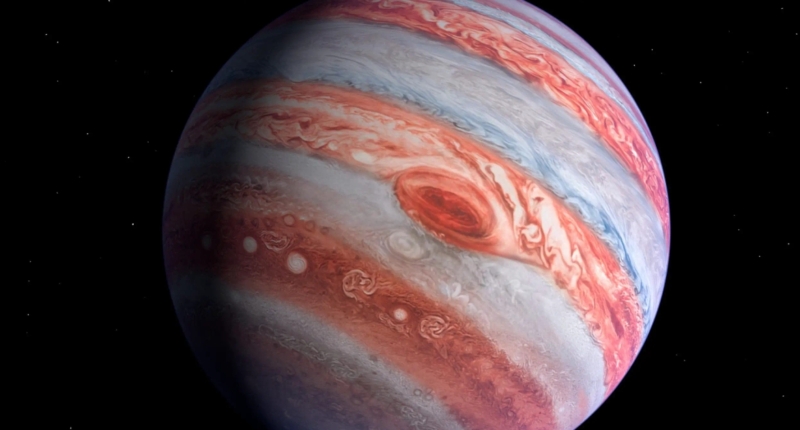Imperial College London researchers have found that nearly 50% of Earth’s supply of volatile zinc came from asteroids that originated from the outer solar system. Volatiles are elements or compounds that can easily transition from solid or liquid to a gaseous state at relatively low temperatures. The material from these asteroids supplied other crucial volatiles, such as water, which are essential building blocks for life on Earth. The findings provide important clues about how Earth came to harbor the special conditions needed to sustain life. The study was funded by the Science and Technology Facilities Council and Rayssa Martins’ Ph.D. scholarship at Imperial College London. The top five important keywords for the article are volatiles, Earth’s zinc inventory, outer Solar System, meteorites, and the origin of Earth’s water.
Imperial College London Researchers Reveal Earth’s Volatiles Origin
Researchers from Imperial College London made a groundbreaking discovery about the origin of Earth’s volatile chemicals, including the building blocks of life, by studying meteorites. The study found that about 50% of Earth’s volatile zinc supply came from asteroids that originated from outside Jupiter, Saturn, and Uranus. This material is believed to have also supplied water and other essential volatiles, which are elements or compounds that can easily transition from solid or liquid to a gaseous state at relatively low temperatures. Volatiles include six of the most commonly occurring elements in living organisms.
The addition of outer Solar System material would have been vital for the emergence of life on Earth. Before the study, researchers believed that most of Earth’s volatiles came from asteroids that formed closer to Earth. The findings show important clues about the conditions that allowed Earth to sustain life.
Senior author Professor Mark Rehkämper from Imperial College London’s Department of Earth Science and Engineering commented on the findings: “Our data show that about half of Earth’s zinc inventory was delivered by material from the outer Solar System, beyond the orbit of Jupiter. Based on current models of early Solar System development, this was completely unexpected.” Previous research suggested that Earth formed mostly from inner Solar System material, but the new findings indicate that the outer Solar System played a more significant role.
Professor Rehkämper added, “This contribution of outer Solar System material played a vital role in establishing the Earth’s inventory of volatile chemicals. It looks as though without the contribution of outer Solar System material, the Earth would have a much lower amount of volatiles than we know it today – making it drier and potentially unable to nourish and sustain life.”
To conduct the study, researchers analyzed 18 meteorites, eleven from the inner Solar System, known as non-carbonaceous meteorites, and seven from the outer Solar System, known as carbonaceous meteorites. The study findings were published in Science.
The findings provide important information on Earth’s unique abundance of life-sustaining water, and the discovery of the origin of Earth’s volatiles has the potential to revolutionize our understanding of how life evolved on Earth.
Meteorites May Have Contributed Half of Earth’s Zinc Inventory
Researchers from Imperial College London have discovered that about half of Earth’s volatile zinc supply came from asteroids that originated from the outer solar system, outside the asteroid belt that includes planets such as Jupiter, Saturn, and Uranus. The study analyzed meteorites to find that nearly 50% of Earth’s supply of volatile zinc came from these asteroids, which are believed to have also supplied other crucial volatiles, such as water. Volatiles are elements or compounds that easily transition from solid or liquid to a gaseous state at relatively low temperatures. The study provides important clues about how Earth came to harbor the special conditions needed to sustain life.
The researchers measured the relative abundances of the five different isotopes of zinc in each meteorite and compared the isotopic fingerprint with Earth samples to estimate how much each material contributed to Earth’s zinc inventory. The results suggest that while the Earth only incorporated about ten percent of its mass from carbonaceous bodies, this material supplied about half of Earth’s zinc.
The findings have important implications for understanding the origin of Earth’s water, as material with a high concentration of zinc and other volatile constituents is also likely to be relatively abundant in water. The researchers plan to analyze rocks from Mars and the Moon to determine whether the colliding asteroid played an important part in delivering volatiles, including water, to Earth.
The study, titled “Nucleosynthetic isotope anomalies of zinc in meteorites constrain the origin of Earth’s volatiles,” was funded by the Science and Technology Facilities Council and Rayssa Martins’ Ph.D. scholarship at Imperial College London.
Don’t miss interesting posts on Famousbio










